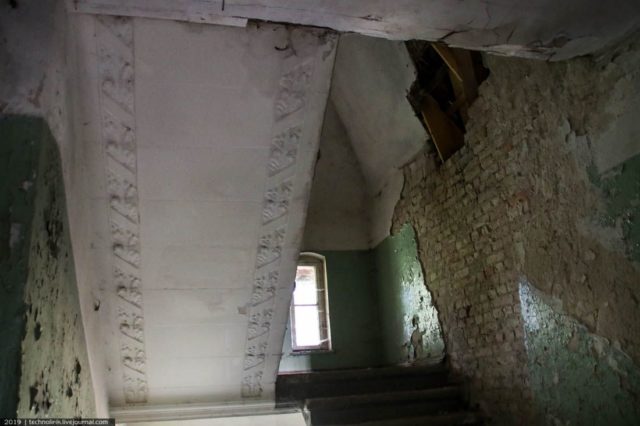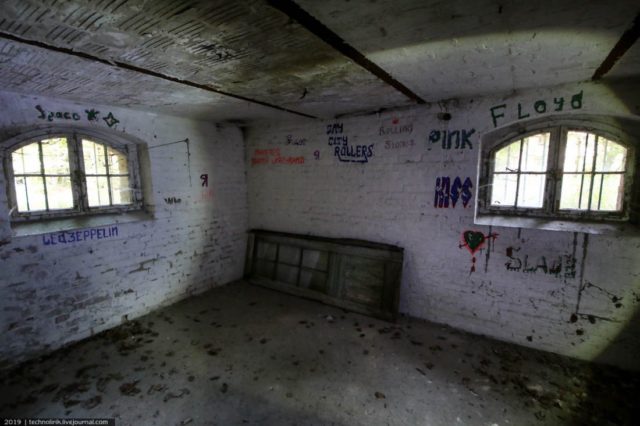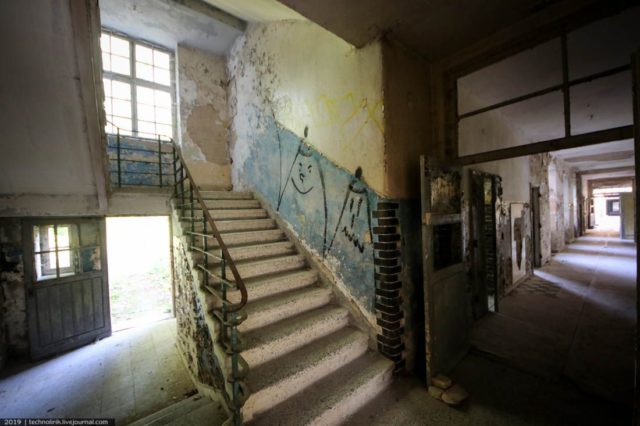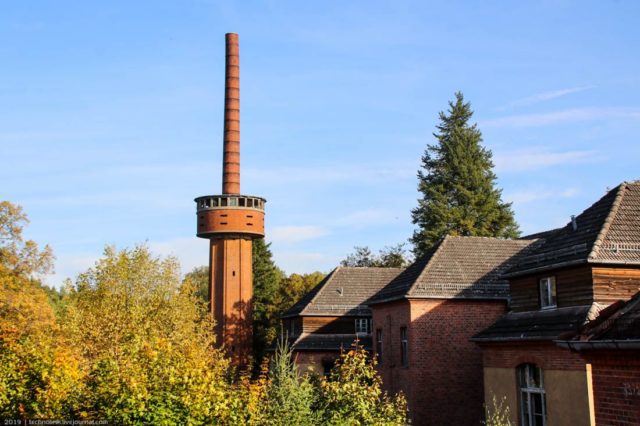Thirty kilometers (18 miles) from Berlin Germany, you can find an abandoned building which was once a sanatorium that accommodated patients with tuberculosis.
The complex is located within a dense pine and birch forest near Oranienburg. The sanatorium got its name in honor of the nearby Lake Grabowsee.
The lung disease known as tuberculosis was very common in the late 18th century and was found in many countries.

Whenever a country entered into an industrial era, the associated working and living conditions, as well as poor nutrition, would likely result in an epidemic of tuberculosis.
Consequently, by the end of the 19th century in the German Empire, records indicate that every seventh person was succumbing to this disease.
German microbiologist Heinrich Robert Koch worked on the development of a vaccine against bacillus, the bacterium that causes tuberculosis. Prior to this, many believed that such a disease could be transmitted genetically.
Following in the footsteps of Louis Pasteur, Koch went in search of a vaccine. By 1890, he had created one called tuberculin and injected himself with it.
However, it was not suitable as a vaccine and just resulted in fever, weakness, and vomiting. The vaccine for tuberculosis (BCG) was created in 1921, but Koch’s failed vaccine was actually used in the diagnosis of tuberculosis.
One female patient of Koch’s was so grateful to him that, at the end of the 19th century, she presented him with a huge estate on the shore of Lake Grabowsee, Germany.
Koch decided to give this site to the imperial department in order to create an experimental infectious diseases clinic.
In 1895, the German doctor Gotthold Panwitz wanted to establish somewhere to treat lung diseases such as tuberculosis in conjunction with the German Red Cross.
He was given this estate and he created a medical institution for the working class of Berlin and the surrounding district, who could not afford to travel to Italy or the Swiss Alps for treatment, as middle- and upper-class citizens did.
At the time, it was thought that only sea or mountain air could work against tuberculosis, and this clinic was seen as an experiment to prove whether or not good old German lowland air could work just as well.

At the beginning of 1896, 27 wooden barracks were built by imperial engineers. These would house the first sick patients who had been admitted to the sanatorium as well as a medical department.
In March that year, the official opening of this part of the complex took place, and by April the first patients were settled.
After the treatment of those first patients proved a success, more buildings were added, including a laundry, a kitchen, and a dining room.
The grounds of the sanitorium eventually covered 35 hectares (86 acres) and had 34 buildings which were designed by famous architects and built before 1929.
By 1900, the complex had 200 beds for patients, all at various stages of the disease.
Until 1918, the sanatorium also housed prisoners of war. After World War I, the sanitorium faced economic difficulties due to hyperinflation.
The Red Cross sold all the buildings in the complex to the National Brandenburg Pension Insurance Fund (Landesversicherungsanstalt) in June 1920.
In 1926, a substantial number of extensions were added, doubling the number of places available for patients by 1930.

In 1920, a small picturesque church was built in the sanatorium, located quite close to the lake. However, there are no details about why the church was constructed or how it was used.
Today, all that is left are ruins because in 2007 the building suffered an arson attack and partially collapsed.
By 1930, in northern Germany, the Grabowsee clinic became one of the most modern health institutions. The rooms for staff and personnel at the sanitorium offered central heating, hot water, and toilets.
Engineers also constructed an electric mini-subway that connected the different sections of the complex, and the lake was equipped for catamaran rides.
The complex was so self-sufficient that a wastewater treatment plant was built near the lake, with the water supply being provided by electric pumps. Greenhouses were installed to grow fresh vegetables, and pets were housed in the clinic.
Initially, the clinic was a civilian hospital. However, during the Second World War, the Grabowsee health clinic treated both civilian and military patients. From the end of World War II until the 1990s, the Soviet Armed Forces used the sanatorium as a Soviet military hospital.

After the withdrawal of Russian troops from Germany, the sanatorium again passed to the Pension Insurance Fund.
However, by now, the buildings were in need of maintenance and repair, all of which would incur huge costs. The territory fell into disrepair as the owners left it to nature
In 2005, the former complex acquired new owners: the non-profit organization Kids Globe, which planned to create an International Children’s Academy, a paradise for children.
These plans included researching and implementing new methods of education for children. However, in the time since the organization acquired the territory, nothing has changed, except for the erection of a large banner with the words “International Academy.”
Nevertheless, one good thing has come out of the new ownership: 24-hour security has been installed and it is now possible for anyone to visit this place legally in return for a fee of 15 euros per person. The ruins of the former sanatorium still attract photographers and other lovers of abandoned places.

The central buildings, constructed between 1926-1929, are well preserved. The water tower is also still evident. The tower was built in the 1930s and combined with the chimney from a boiler room.
This place is ideal as a filming and photo location. In 2011, the abandoned area hosted the Artbase Festival of Music and Art.
In 2013, part of the movie The Monuments Men starring George Clooney was shot here, and Grabowsee was also the location for a 2018 German horror movie called Heilstätten.
While much of the majestic architecture has collapsed over time, the site is still picturesque, incorporating both street art and the natural beauty of its surroundings.
Big thank you to Alexandr and his LiveJournal account for sharing such amazing photographs about this site filled with rich history! Alex lives in Germany and has got an account where he writes about different locations. You should definitely check his LiveJournal account and Facebook page.








































Another Article From Us Abandoned Willard Asylum in New York

